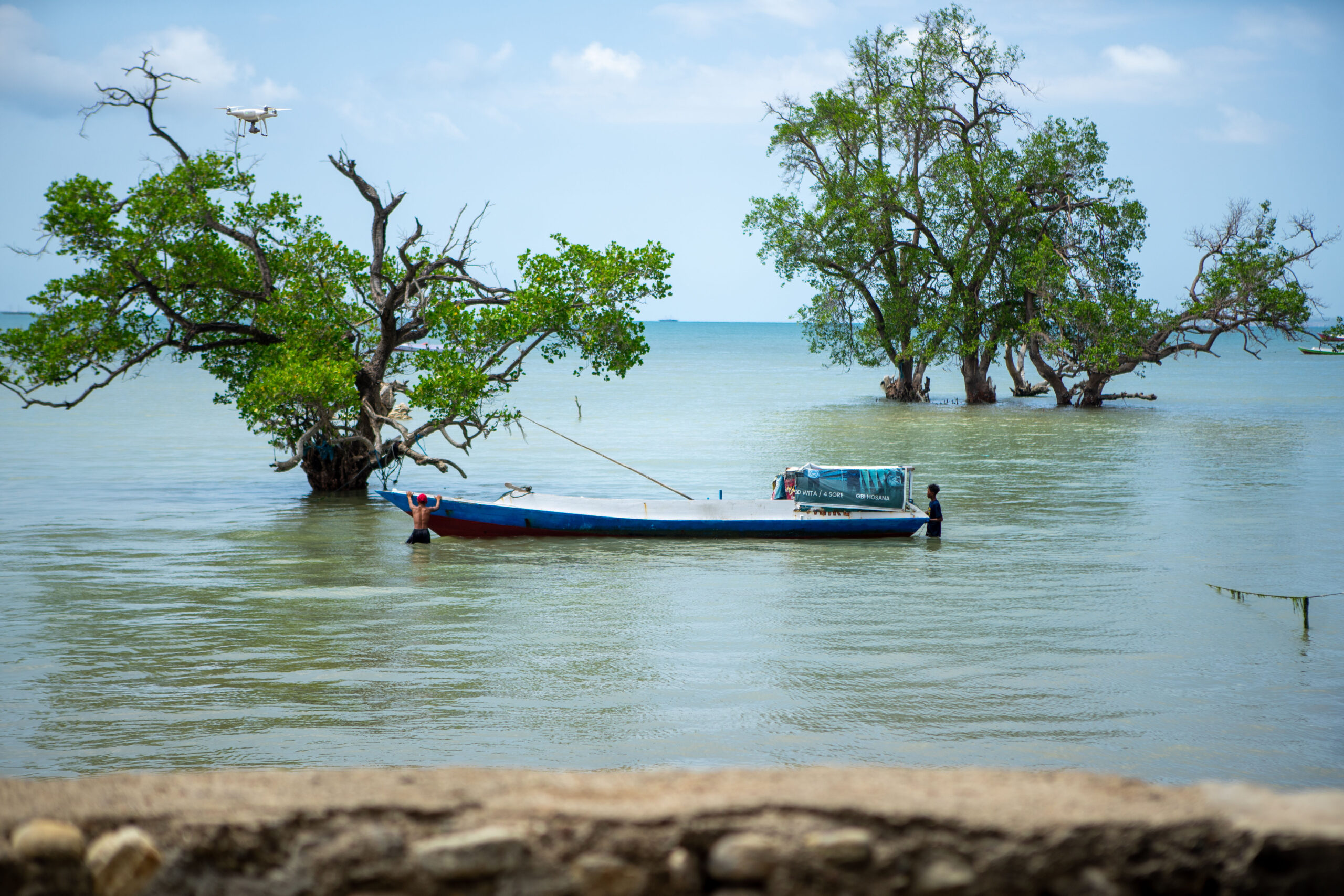
Climate Justice | August 15, 2024
The ‘Climate Witness’ Film: The Voices of the Climate Crisis Solutions
Arti Indallah Tjakranegara
Cyclone Seroja at East Nusa Tenggara Province has caused 181 people died, 184 people injured, 26 people missing, 50,000 people lost their homes, and 466,000 people directly affected. Leaving behind sorrow and trauma at midnigt, April 4, 2021. The climate crisis is not a tale, but a real story that is happening and has a bad impact on the earth and humans.
Cyclone Seroja has indeed passed, but the potential for additional cyclones and other climate-related disasters in Indonesia due to the impact of the climate crisis continues to surround East Nusa Tenggara (NTT). The lack of rainfall results in the planting season being delayed by two months. Quoted from rri.co, Head of the NTT Provincial Agriculture and Food Security Office, Lecky Frederick Koli, stated that the rice planting area in NTT has only reached more than 40,000 hectares out of a total land area of more than 214,000 hectares.
The sea waves often grow in size, making it challenging for fisherfolks to find fish, and there are also piles of rubbish that accumulate on the shoreline and harm coral reefs.
When we discuss the impact of the climate crisis, we can expect to hear many stories from NTT. It is an unavoidable reality or a phenomenon that needs our attention and calls for us to adapt and build resilience through fair climate crisis solutions.
The climate crisis must be addressed with a variety of solutions based on local wisdom, making affected community the primary actors in the development of climate solutions.
These various climate solutions are true stories, not mere fairy tales. The climate solutions carried out by NTT residents are well-documented through a series of short documentary films with the theme of Climate Witness.
The Hope of Mangrove in Holulai
Meet Balsasar Darius Mboeik, a 47-year-old elder in the Manggi tribal community in Manggarai, NTT. He led the initiative to plant 2,500 mangrove trees along the coastline near Holulai Village. This effort is a response from residents to safeguard the village from the threat of storms.
The village has a traditional rule known as Hoholok Papadak. This rule regulates and protects the marine ecosystem, including prohibits the taking and cutting down of resources from the nearby mangrove forest. There are customary and social sanctions for those who violate it. Furthermore, the rule has been formalized through village regulations.
“Because protecting the mangroves means we are protecting nature. We protect nature for the greater good, which is not only for ourselves but also for our children and grandchildren.”
Local Food Sovereignty in Hewa
In Hewa Village, there are 17 springs serving as the primary source of water for its community. Unfortunately, two of these springs have dried up, while the remaining 15 are experiencing a drop in water flow. These changes are directly linked to the climate crisis affecting Hewa Village and are having an impact on food security in the area.
Preserving local food is one of the keys for the residents to adapt and survive the current climate crisis. Meet Maria Mone Soge, a 34-year-old high school mathematics teacher at SMA Negeri 1 Wulanggitang. Becoming a teacher has been her dream since childhood. Outside of teaching, she is also a farmer.
For Maria, restoring springs by planting betung bamboo is one of the climate solutions that maintain food sources and preserve various local food plants for food sovereignty.
“We conduct conservation efforts at the Lewok spring and along its river flow. It is one of the water sources for the village’s consumption and for irrigating the rice fields.”
Carbon Footprint of Plastic Waste
Behind the beautiful blue beach of Larantuka lies a scattering of plastic rubbish, leading to increasing pollution in the sea. Klemens Heka Hayon, a 35-year-old resident, acknowledges the strong link between the plastic industry and the ongoing climate crisis.
It was this awareness that led him to take a big initiative to organize various communities to clean up plastic waste, successfully removing six tons from the sea and two tons from residential areas. Additionally, he helped plant coral reefs in the sea and established a waste bank in his local area.
“More and more friends are joining. The Village Apparatus organization also took part in cleaning the beach. The same thing is also done by the community in the coastal areas and villages.”
My Voice, My Ocean
From the capital of NTT, Kupang City, the community has initiated an advocacy movement urging the government to implement policies addressing the climate crisis. Challenges such as high waves and strong winds are reducing fisherfolk’s catches.
Muhammad Mansur Dokeng, a 41-year-old fisherman, and other small-scale fisherfolksjoined the United Fishermen’s Council organization (Majelis Nelayan Bersatu) in Kupang City. The advocacy efforts conducted by this fisherfolk’s organization have yielded positive outcomes, an equitable development ranging from protecting the fishing vessels to securing bank loans without collateral.
“As a representative for complaints of the climate crisis, my role is to advocate for issues affecting the fisherfolks. The dumping of plastic waste into the sea, the reduced catches, we report them all to the Fisheries and Maritime Office.”
***
Films or movies have been long recognized as an effective and easily accepted educational medium for all groups of people. The combination of audio-visual elements and compelling storytelling is believed to make it easier for viewers with their senses to grasp the message conveyed in the film.
The film Climate Witness aims to invite viewers to learn about and recognize some effective solutions for the ongoing climate crisis, particularly in NTT. The hope is that the various climate solutions showcased in this film will inspire many groups of people to replicate similar practices and receive acknowledgment and support from the government. Locally-based climate solutions have the potential to enhance resilience and create more just conditions that align with the needs of the most affected communities.
These stories should not end here. They must be widely shared and become a historical record of efforts, innovations, and compassionate approaches to addressing the climate crisis.

